Messier Monday: The Most Elusive Globular Cluster, M55
It took Messier himself more than a decade to observe it, but the reward is a glimpse into the ancient Universe!
Image credit: Daniel Verschatse, via http://www.astrosurf.com/antilhue/m55.htm.
“The only thing I have learnt over the years is that if you enjoy your work and put in the best efforts, it will show. If you follow this process, things work out. But if you go chasing a formula, success will elude you.” -Mahesh Babu
But if you go chasing objects in the skies, you’re far better off paying close attention to those who have found them before! That’s the whole point of astronomical catalogues, and of what we’re trying to highlight here on Messier Mondays. Intending to create an accurate catalogue — in both position and description — of the brightest deep-sky objects visible from the Northern Hemisphere, Charless Messier’s compilation of 110 astronomical curiosities has provided generations of astronomers, professional and amateur alike, with countless hours of viewing pleasure.
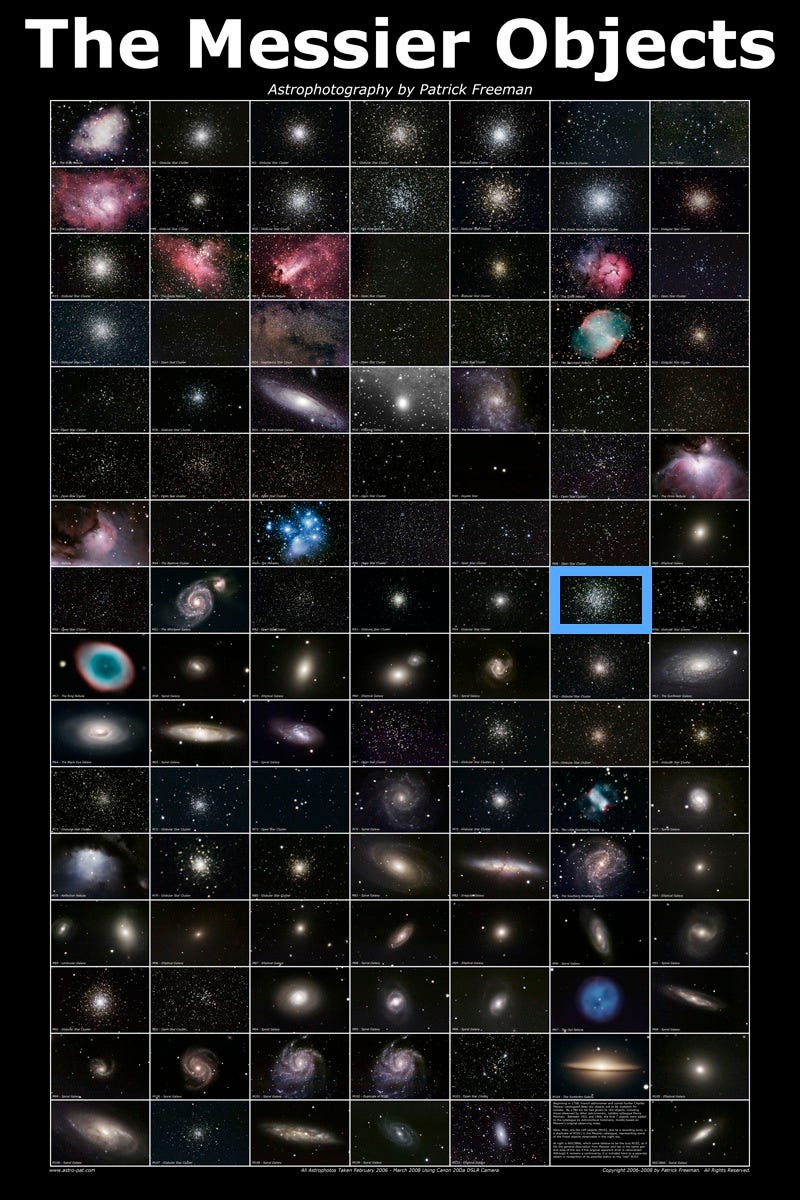
But not all Messier objects are so easy to find, particularly the ones that are farthest below the celestial equator (from high northern latitudes), particularly the ones that are somewhat intrinsically faint and diffuse, and particularly the ones that don’t have any nearby, bright stars to guide you there. In the case of today’s object — Messier 55 — all three of these things are true. Yet, if you know when and where to look, a glimpse back in time to a relic of the Universe from when it was less than 10% of its present age will be your reward.
Here’s how to find it.
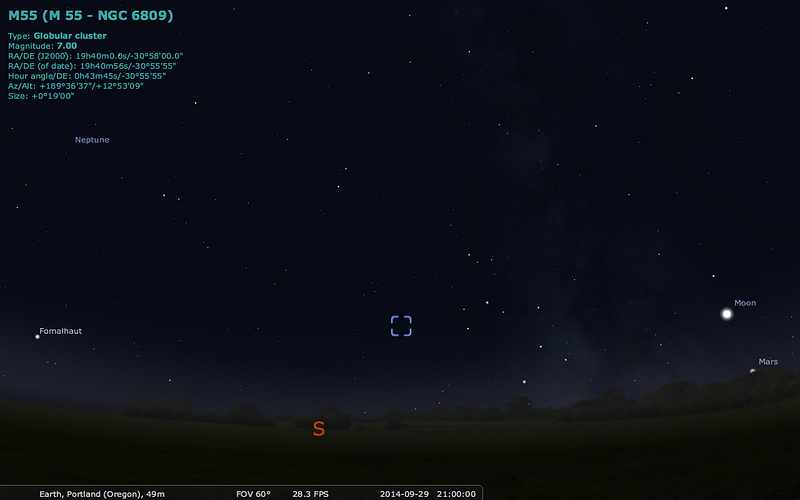
Shortly after sunset — and you’ll have to contend with a crescent Moon to find this object before it sets — the constellation of Sagittarius looms prominently in the far southern portion of the sky. As autumn begins, the famous star pattern of “the teapot” appears lower and further towards the west, setting earlier and earlier as we head towards winter. The easternmost of these eight prominent stars make up the teapot’s handle, and in particular, the two handle stars that jut out away from the kettle itself will guide you towards Messier 55.
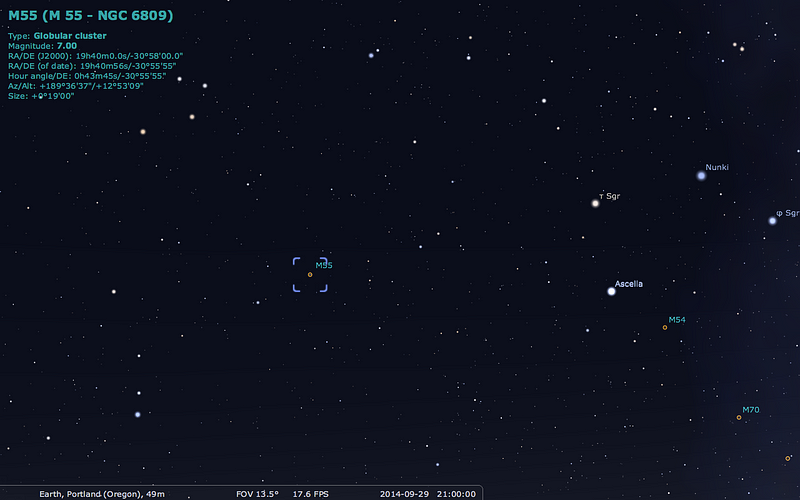
These two stars — Nunki and the fainter τ Sagittarii — point in roughly a straight line towards our object, but as you can see clearly (above), there really aren’t any prominent stars in that region of sky to guide you. As it is, Messier 55 is a good 10° away from Nunki and τ Sagittarii.
However, there are three barely naked-eye stars (easily visible in binoculars or through the lowest powered telescope) that can help you along your way: a pair before you get to Messier 55 and another single one just a little beyond it.

The pair — an orange giant and a massive blue star — are still a good 3° away from Messier 55, while the single star is a blue giant that’s approaching us, just a single degree past today’s object. This object was first catalogued in 1752 by an observer (de Lacaille) in South Africa, with Messier looking for it in vain as early as 1764! Only in 1778 did he finally spot it, noting:
A nebula which is a whitish spot, of about 6′ extension, its light is even and does not appear to contain any star. Its position has been determined from zeta Sagittarii, with the use of an intermediate star of 7th magnitude.
Through most telescopes, you’ll see something similar to this description.
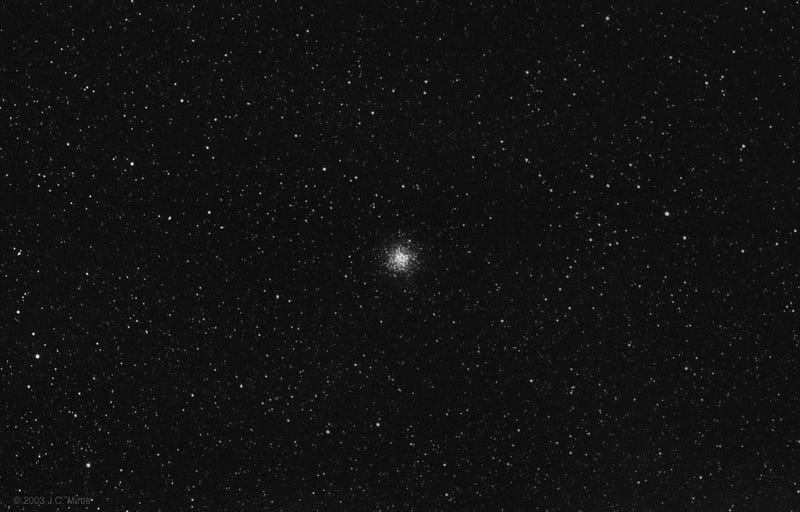
With better optics or with longer exposures, you’ll be able to make out something Messier wasn’t able to see: individual stars. What a large telescope with a long-exposure CCD camera can obtain is truly astounding, and sheds some remarkable light on this dense island of stars orbiting around the halo of our galaxy.
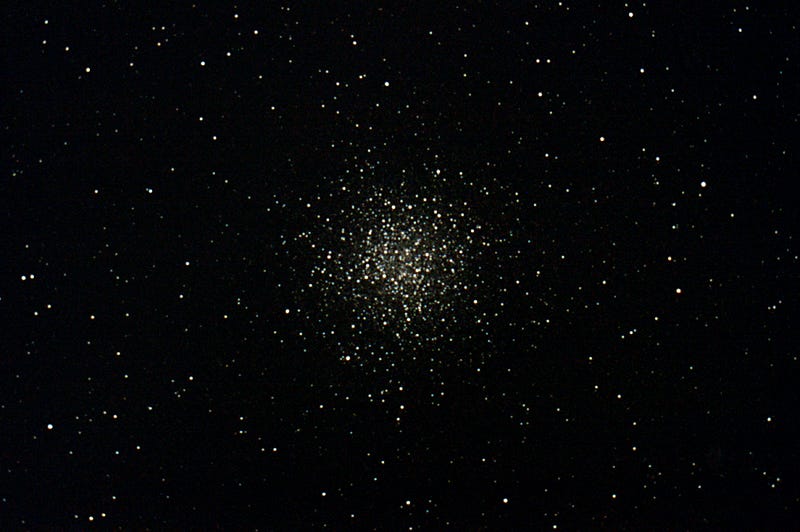
Because what you’re looking at isn’t just a faint, diffuse cluster of stars, these are stars that date back to some of the earliest times in the history of our galaxy! Our Sun contains lots of heavy elements: carbon, oxygen, silicon, sulphur, iron, and so on, and it’s the abundance of those heavy elements that allowed rocky planets to form around it. Stars that formed longer ago, and in regions that had fewer generations of stars live-and-die to enrich the interstellar medium, tend to be poorer in these heavy elements, and give us a glimpse of the stars that formed when the Universe was much younger.
Globular clusters tend to have older stars, but Messier 55 has just 1.1% of the heavy elements found in the Sun, one of the most metal-poor globulars known to exist!
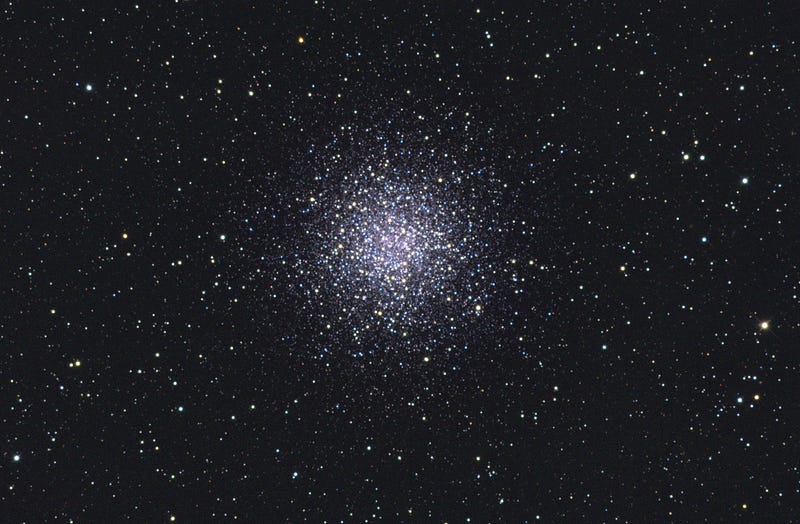
If you can head down to more southerly latitudes — those of you in Texas, Greece, or (ideally) Australia — are in for some truly spectacular sights, as without having the low-altitude horizon to contend with, this object truly glitters.
What you’re looking at is a collection of some 269,000 solar masses confined to a radius of just 48 light years, with a relatively diffuse core and a bright, extended density profile. On the Shapley-Sawyer Concentration Class scale for globular clusters, this is far towards the diffuse end, rating an XI on a scale of I to XII. But in a sense, this is better, because it makes the central core easier to study.
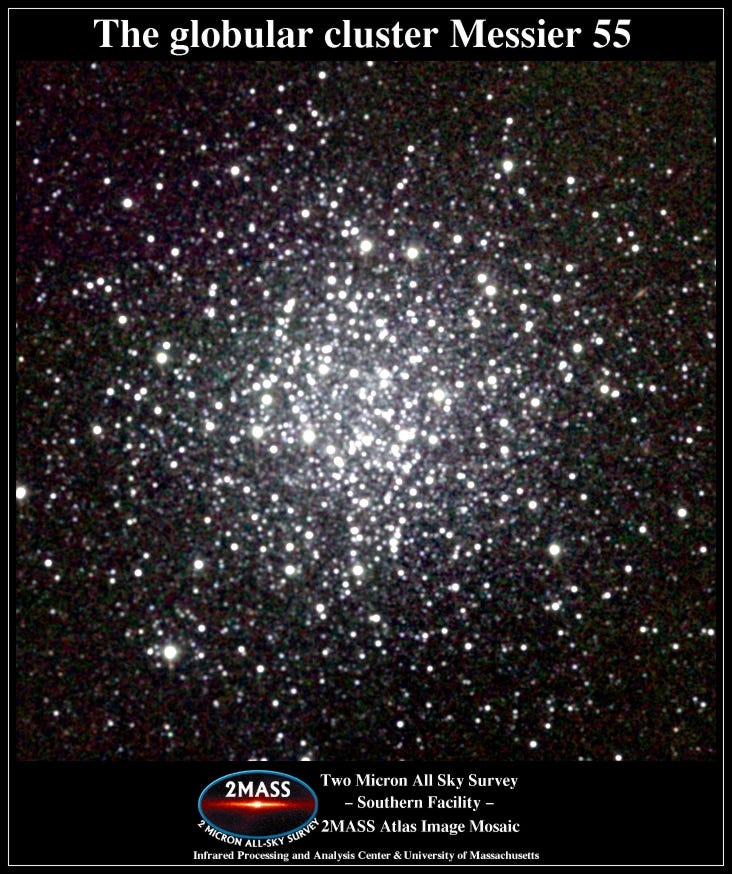
So does looking in the infrared, which allows us to see through the galactic dust which blocks so much visible light. As it stands, that doesn’t have so dramatic an effect on this object, as it’s on the near side of the galaxy with respect to us (at just 17,000 light-years distant), and it’s far enough out of the galactic plane to have a relatively clear line-of-sight towards us.
That said, there are close to 100,000 stars inside, with many surprisingly long-lived giant stars, telling us that there may yet be something very special about the stars present in this globular.
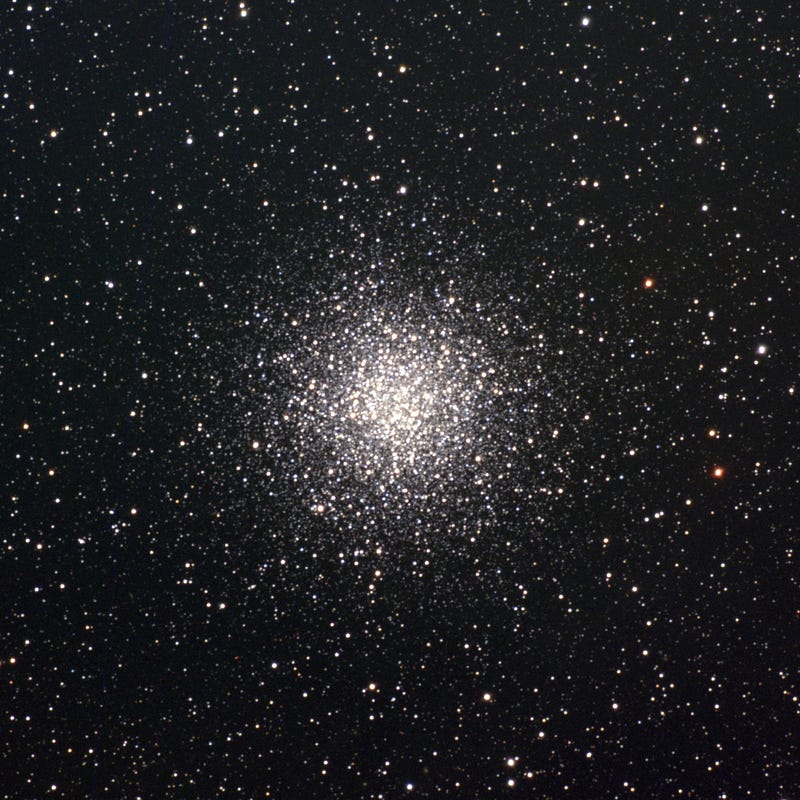
What we’re learning is that, although the stars in here are old, they might not be quite the oldest stellar population we’ve encountered. Something may have happened to produce some excess helium before these stars first formed. Alternatively, evolutionary or environmental effects may have given this globular cluster some unusual properties, including the long-lived giant star population or the very small number of variable stars found inside.
Regardless, whether you’ve got a small amateur telescope…
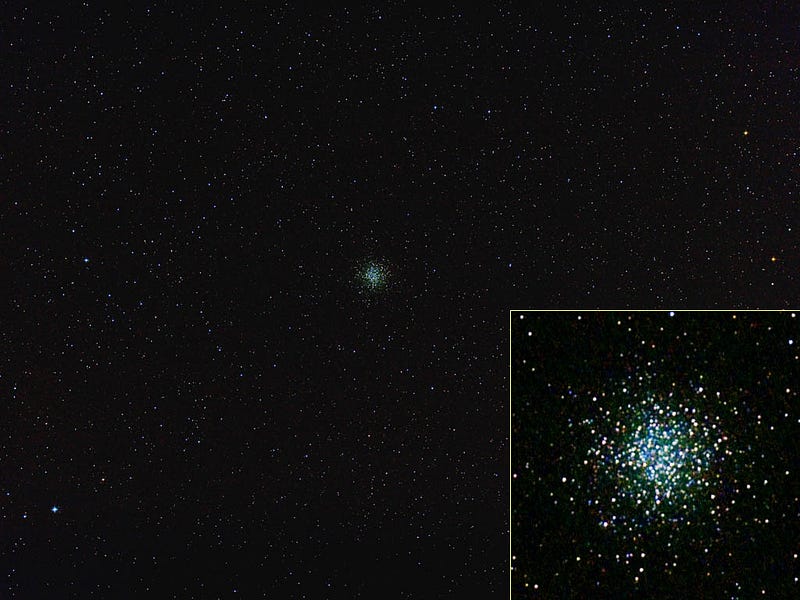
or a gigantic, world-class professional one…
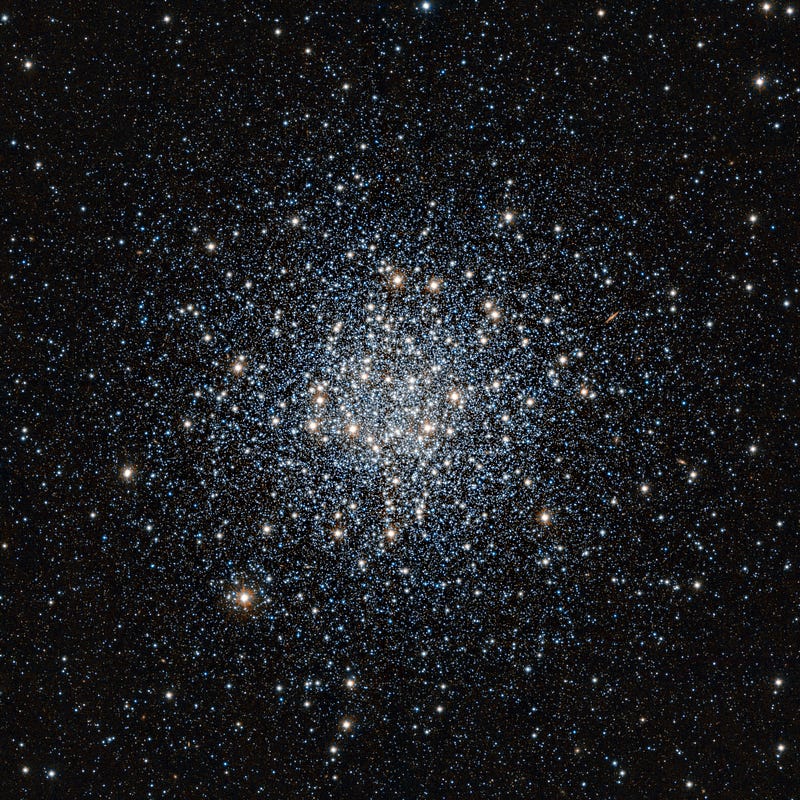
the views that Messier 55 provides to us are not only teaching us about our galaxy’s ancient past, but also how stars might have evolved differently based on a slight difference in their super-ancient past!
To close today’s Messier Monday down, let’s have a look at this most spectacular view courtesy of the European Southern Observatory, in fantastic full-resolution!
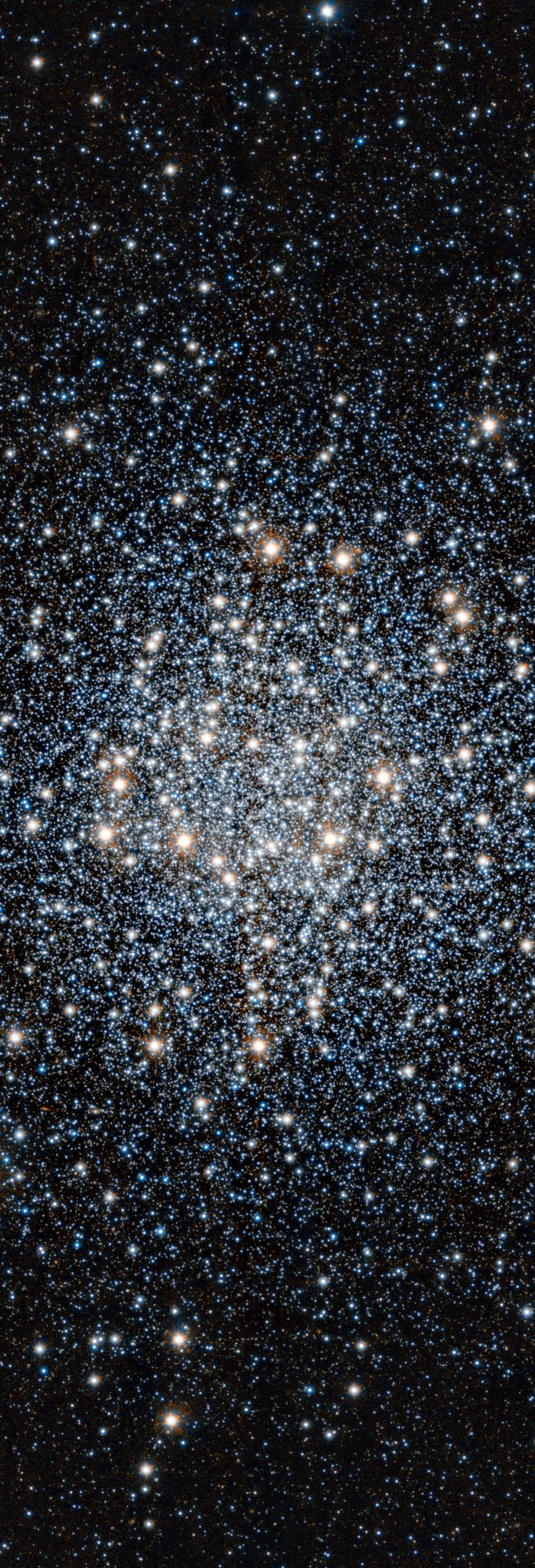
The bluest stars you see are examples of recent mergers, while the brightest ones you see are giant stars, well on their way to becoming planetary nebulae! And with that, we come to the end of our 102nd Messier Monday, leaving just eight objects more. Have a look back at all our previous entries here:
- M1, The Crab Nebula: October 22, 2012
- M2, Messier’s First Globular Cluster: June 17, 2013
- M3, Messier’s First Original Discovery: February 17, 2014
- M4, A Cinco de Mayo Special: May 5, 2014
- M5, A Hyper-Smooth Globular Cluster: May 20, 2013
- M6, The Butterfly Cluster: August 18, 2014
- M7, The Most Southerly Messier Object: July 8, 2013
- M8, The Lagoon Nebula: November 5, 2012
- M9, A Globular from the Galactic Center: July 7, 2014
- M10, A Perfect Ten on the Celestial Equator: May 12, 2014
- M11, The Wild Duck Cluster: September 9, 2013
- M12, The Top-Heavy Gumball Globular: August 26, 2013
- M13, The Great Globular Cluster in Hercules: December 31, 2012
- M14, The Overlooked Globular: June 9, 2014
- M15, An Ancient Globular Cluster: November 12, 2012
- M18, A Well-Hidden, Young Star Cluster: August 5, 2013
- M19, The Flattened Fake-out Globular: August 25, 2014
- M20, The Youngest Star-Forming Region, The Trifid Nebula: May 6, 2013
- M21, A Baby Open Cluster in the Galactic Plane: June 24, 2013
- M23, A Cluster That Stands Out From The Galaxy: July 14, 2014
- M24, The Most Curious Object of All: August 4, 2014
- M25, A Dusty Open Cluster for Everyone: April 8, 2013
- M27, The Dumbbell Nebula: June 23, 2014
- M28, The Teapot-Dome Cluster: September 8, 2014
- M29, A Young Open Cluster in the Summer Triangle: June 3, 2013
- M30, A Straggling Globular Cluster: November 26, 2012
- M31, Andromeda, the Object that Opened Up the Universe: September 2, 2013
- M32, The Smallest Messier Galaxy: November 4, 2013
- M33, The Triangulum Galaxy: February 25, 2013
- M34, A Bright, Close Delight of the Winter Skies: October 14, 2013
- M36, A High-Flying Cluster in the Winter Skies: November 18, 2013
- M37, A Rich Open Star Cluster: December 3, 2012
- M38, A Real-Life Pi-in-the-Sky Cluster: April 29, 2013
- M39, The Closest Messier Original: November 11, 2013
- M40, Messier’s Greatest Mistake: April 1, 2013
- M41, The Dog Star’s Secret Neighbor: January 7, 2013
- M42, The Great Orion Nebula: February 3, 2014
- M44, The Beehive Cluster / Praesepe: December 24, 2012
- M45, The Pleiades: October 29, 2012
- M46, The ‘Little Sister’ Cluster: December 23, 2013
- M47, A Big, Blue, Bright Baby Cluster: December 16, 2013
- M48, A Lost-and-Found Star Cluster: February 11, 2013
- M49, Virgo’s Brightest Galaxy: March 3, 2014
- M50, Brilliant Stars for a Winter’s Night: December 2, 2013
- M51, The Whirlpool Galaxy: April 15th, 2013
- M52, A Star Cluster on the Bubble: March 4, 2013
- M53, The Most Northern Galactic Globular: February 18, 2013
- M54, The First Extragalactic Globular: September 22, 2014
- M55, The Most Elusive Globular Cluster: September 29, 2014
- M56, The Methuselah of Messier Objects: August 12, 2013
- M57, The Ring Nebula: July 1, 2013
- M58, The Farthest Messier Object (for now): April 7, 2014
- M59, An Elliptical Rotating Wrongly: April 28, 2014
- M60, The Gateway Galaxy to Virgo: February 4, 2013
- M61, A Star-Forming Spiral: April 14, 2014
- M62, The Galaxy’s First Globular With A Black Hole: August 11, 2014
- M63, The Sunflower Galaxy: January 6, 2014
- M64, The Black Eye Galaxy: February 24, 2014
- M65, The First Messier Supernova of 2013: March 25, 2013
- M66, The King of the Leo Triplet: January 27, 2014
- M67, Messier’s Oldest Open Cluster: January 14, 2013
- M68, The Wrong-Way Globular Cluster: March 17, 2014
- M69, A Titan in a Teapot: September 1, 2014
- M70, A Miniature Marvel: September 15, 2014
- M71, A Very Unusual Globular Cluster: July 15, 2013
- M72, A Diffuse, Distant Globular at the End-of-the-Marathon: March 18, 2013
- M73, A Four-Star Controversy Resolved: October 21, 2013
- M74, The Phantom Galaxy at the Beginning-of-the-Marathon: March 11, 2013
- M75, The Most Concentrated Messier Globular: September 23, 2013
- M77, A Secretly Active Spiral Galaxy: October 7, 2013
- M78, A Reflection Nebula: December 10, 2012
- M79, A Cluster Beyond Our Galaxy: November 25, 2013
- M80, A Southern Sky Surprise: June 30, 2014
- M81, Bode’s Galaxy: November 19, 2012
- M82, The Cigar Galaxy: May 13, 2013
- M83, The Southern Pinwheel Galaxy, January 21, 2013
- M84, The Galaxy at the Head-of-the-Chain, May 26, 2014
- M85, The Most Northern Member of the Virgo Cluster, February 10, 2014
- M86, The Most Blueshifted Messier Object, June 10, 2013
- M87, The Biggest One of them All, March 31, 2014
- M88, A Perfectly Calm Spiral in a Gravitational Storm, March 24, 2014
- M89, The Most Perfect Elliptical, July 21, 2014
- M90, The Better-You-Look, The Better-It-Gets Galaxy, May 19, 2014
- M91, A Spectacular Solstice Spiral, June 16, 2014
- M92, The Second Greatest Globular in Hercules, April 22, 2013
- M93, Messier’s Last Original Open Cluster, January 13, 2014
- M94, A double-ringed mystery galaxy, August 19, 2013
- M95, A Barred Spiral Eye Gazing At Us, January 20, 2014
- M96, A Galactic Highlight to Ring in the New Year, December 30, 2013
- M97, The Owl Nebula, January 28, 2013
- M98, A Spiral Sliver Headed Our Way, March 10, 2014
- M99, The Great Pinwheel of Virgo, July 29, 2013
- M100, Virgo’s Final Galaxy, July 28, 2014
- M101, The Pinwheel Galaxy, October 28, 2013
- M102, A Great Galactic Controversy: December 17, 2012
- M103, The Last ‘Original’ Object: September 16, 2013
- M104, The Sombrero Galaxy: May 27, 2013
- M105, A Most Unusual Elliptical: April 21, 2014
- M106, A Spiral with an Active Black Hole: December 9, 2013
- M107, The Globular that Almost Didn’t Make it: June 2, 2014
- M108, A Galactic Sliver in the Big Dipper: July 22, 2013
- M109, The Farthest Messier Spiral: September 30, 2013
And join us next week for one of the final eight objects left to explore in this remarkable catalogue, only here on Messier Monday!
Leave your comments at the Starts With A Bang forum on Scienceblogs!





